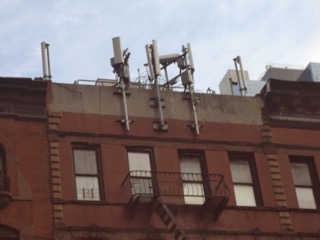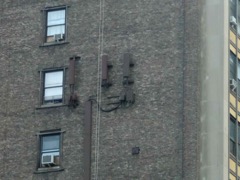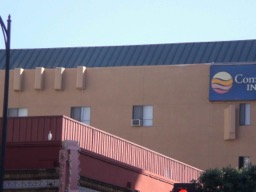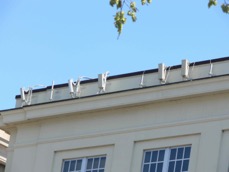Acceleration of Broadband Deployment by Improving Wireless Facilities Siting Policies
17 10, 14 13:19 Filed in: antenna issues | NBP
The title of this post is the title FCC used for today’s Report and Order on tower siting (presumably not “sitting” as one FCC announcement said.)
The discussed focused on the urgent need for wireless capacity and the related wireless infrastructure. WE FULLY AGREE!
But there were 2 key points that were not said, perhaps they would be awkward given the influence of the cellular establishment at FCC and in DC in general.
 First, we have used this diagram from an Ofcom report several times although we have never seen a similar diagram in any FCC publication, let alone a CTIA one. Wireless capacity is a function of 3 different inputs: spectrum, technology, and “topology”/wireless infrastructure. Historically most of the increase in capacity has come from infrastructure growth, not spectrum increases. If you double the available spectrum for cellular carriers you may increase capacity by more than 2, but you will not increase it by a factor of 20. If you need a 10,000 fold increase in capacity you need a lot more infrastructure - that is why the issue is so important. But spectrum demands generally gets much more attention. Why?
First, we have used this diagram from an Ofcom report several times although we have never seen a similar diagram in any FCC publication, let alone a CTIA one. Wireless capacity is a function of 3 different inputs: spectrum, technology, and “topology”/wireless infrastructure. Historically most of the increase in capacity has come from infrastructure growth, not spectrum increases. If you double the available spectrum for cellular carriers you may increase capacity by more than 2, but you will not increase it by a factor of 20. If you need a 10,000 fold increase in capacity you need a lot more infrastructure - that is why the issue is so important. But spectrum demands generally gets much more attention. Why?
 Second, the discussion focused almost entirely on the problem being local governments that don’t appreciate how important wireless capacity is. For no rational reason, at least that was mentioned, do local governments question the proposed installations of the cellular establishment. Well, your blogger has a somewhat different viewpoint that has been stated here before: Too often cellular infrastructure looks like it was “designed by engineers” and does not consider the physical design of the immediate environment. Here is a pair of essays from your blogger and an industry engineer that discuss very different views on this issue. You decide.
Second, the discussion focused almost entirely on the problem being local governments that don’t appreciate how important wireless capacity is. For no rational reason, at least that was mentioned, do local governments question the proposed installations of the cellular establishment. Well, your blogger has a somewhat different viewpoint that has been stated here before: Too often cellular infrastructure looks like it was “designed by engineers” and does not consider the physical design of the immediate environment. Here is a pair of essays from your blogger and an industry engineer that discuss very different views on this issue. You decide.
Now the cell industry does sometimes due a good job in designing infrastructure to match its environment. Here are 3 examples of apparently modest cost installations that are reasonable design compromises. Note that in all 3 cases the covers/radomes of the antennas approximately match the surface they are mounted on; in addition there a no loose visually contrasting cables in these last 3 photos:
(In NYC only 2 blocks from the previous photo)



 However, the unnecessary visual ugliness of the first photo is much more common than the good design of the next 3. If FCC and the cellular industry want local governments to be more cooperative, they should view cooperation as a 2-way street. Cellular infrastructure should more consistently consider its immediate environment as part of improving the interactions between the industry and local governments. Remember what Tip O’Neill famously said:
However, the unnecessary visual ugliness of the first photo is much more common than the good design of the next 3. If FCC and the cellular industry want local governments to be more cooperative, they should view cooperation as a 2-way street. Cellular infrastructure should more consistently consider its immediate environment as part of improving the interactions between the industry and local governments. Remember what Tip O’Neill famously said:
The discussed focused on the urgent need for wireless capacity and the related wireless infrastructure. WE FULLY AGREE!
But there were 2 key points that were not said, perhaps they would be awkward given the influence of the cellular establishment at FCC and in DC in general.


Now the cell industry does sometimes due a good job in designing infrastructure to match its environment. Here are 3 examples of apparently modest cost installations that are reasonable design compromises. Note that in all 3 cases the covers/radomes of the antennas approximately match the surface they are mounted on; in addition there a no loose visually contrasting cables in these last 3 photos:
(In NYC only 2 blocks from the previous photo)




“All politics is local”
There is a limit how much the cellular industry can impose on local jurisdictions at the current ugliness levels without a grassroots political backlash. But well designed infrastructure need not be either ugly or very expensive. More consistent attention to physical design is urgently needed!
UPDATE
PCIA Press Release: PCIA Applauds FCC’s Order on Wireless Infrastructure – Streamlined Rules Will Speed Broadband Deployment
blog comments powered by Disqus



![Validate my RSS feed [Valid RSS]](valid-rss-rogers.png)

